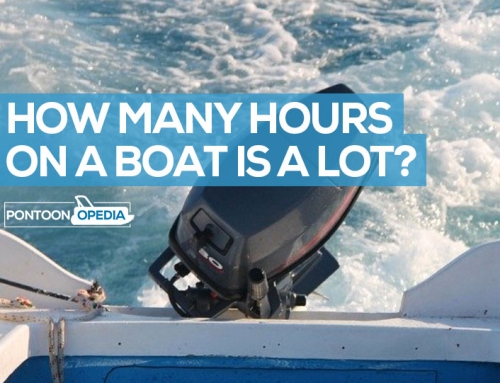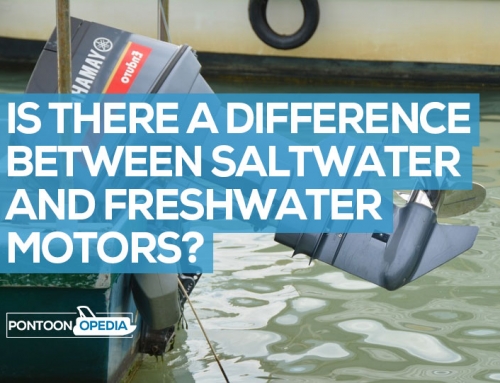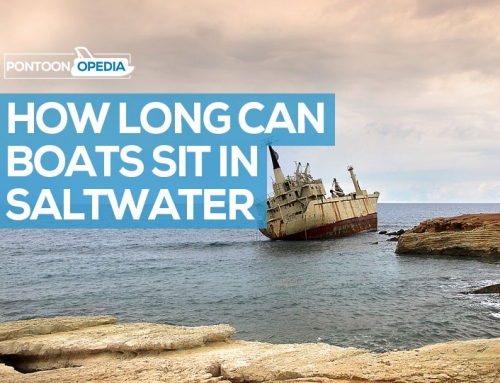Having a boat is a great joy that can create many fond memories, but the worst feeling is when your bot starts stuttering, stalling and simply not running as smoothly as it used to. This could be any number of issues, and your mind will begin jumping to all kinds of worst-case scenarios.
However, if you haven’t cleaned out your tank for some time then it is most likely just this that is causing the problem. In this guide I will take you through each step on how to clean a boat gas tank without removing it.
How to clean out a boat gas tank
What you will need:
- Syphon pump (view Amazon prices)
- Container large enough to hold the drained fuel
- Sea Foam carb cleaner (view Amazon prices)
- Fuel tank cleaner (view Amazon prices)
1: Prepare your work area
Before getting started make sure you do the necessary preparations for the coming cleanup operation.
Working with fuel in a confined space means that the fumes have a chance to accumulate to dangerous levels, so be careful not to have any open ignition sources nearby when you are cleaning the tank.
If you have the misfortune of igniting the gas inside the tank then best case, you will create a jet of hot gas and fire coming out of the open ports on the tank. In the worst case you could cause an explosion that not only destroys the tank but possible leads to injuries.
Warning: Be really careful and if you have the slightest worry then it is best to contact a professional to assist.
Make sure that your boat is out of the water and it’s in a well-ventilated area, do not empty your tank inside your garage.
You will need to get some PPE and safety wear to protect yourself from a few hazards.
You will need chemical resistant gloves, safety goggles and an overall. Make sure you wear old clothes as fuel has a tendency to stay in clothes and not wash out very easily.
2: Empty your boat’s gas tank
We’ve all seen or heard about this; someone will heroically take a small piece of hose, jam it in the gas tank and suck out some gas to establish a syphon and then get a larger than expected mouthful of fuel.
Spend a few dollars and buy a cheap syphon pump to suck out all the fuel in your tank and save yourself the embarrassment of almost choking on toxic fuel.
You should already know how much fuel it takes to fill your tank so make sure you have a large enough container to catch all the fuel.
It’s best to be strategic about this and wait until your boat is almost empty, as this will reduce the amount of effort required and also significantly reduce the risk.
But beware; it takes very little gasoline to cause a huge explosion.
Depending on how long you left fuel in the tank there might be a thick sludge at the bottom of the tank that cannot be syphoned out.
You will need to leave this inside the tank for the time being.
A good tip is to move your boat and trailer onto a lightly inclined area so that the fuel pools up in one corner of the tank so that’s it’s easier to collect.
3: Clean the boat’s gas tank
Once all the fuel has been removed you must isolate the lines from the tank to the engine to stop any unwanted fluids from getting into your engine when you start up again.
Once the tank has been isolated you can use some Sea Foam carb cleaner to dissolve any varnish and gummy residue that is still in the tank.
Alternatively, you can fill your tank up with some isopropyl alcohol and let it sit there for some time and dissolve any sticky and gummy residue in the tank.
You can then pump out the alcohol through a makeshift sieve. This will allow you to see if you are removing any gunk from the tank.
Keep going until the sieve is no longer catching any particles. You can then safely say that the alcohol has removed all it can.
Let the gas tank air out a bit and if you’re still not convinced that the tank is clean enough you will need to get hold of a high-pressure cleaner to wash out the inside of the tank.
The nozzle from the pressure cleaner may not be able to reach all the areas in the tank and you will then need to get a tank cleaning nozzle. These types of nozzles are designed specifically to clean hard to reach places inside a tank.
Your tank is now clean, let the tank air out for a while so that all the remaining water can evaporate.
If you neglected your tank for a bit too long then you will most likely need to clean all the hoses, fuel sender unit and all fuel filters.
Depending on the condition of these it might be the perfect time to replace them so that you start a fresh with a completely clean tank.
4: Close up the gas tank
Once the tank is clean and you have reattached all the hoses and fittings you will want to fill up with gas again. This time include some additives like a fuel tank cleaner into the fuel to help keep the tank cleaner in future.
Once the fuel is filled in take some time to check for any leaks just in case you did not properly tighten a hose clamp.
Related questions
That’s how to how to clean out a boat gas tank without removing it. There are some additional things I want you to be aware of too.
How to clean a removable plastic gas tank
Removable plastic gas tanks tend to hold emergency fuel and as such they tend to get a buildup of dirt and residue over time.
When you drain the fuel make sure you pass it though some kind of sieve if you intend to use the fuel again. However, be careful of phase separated fuel as you should definitely dispose of it (In an environmentally friendly manner of course).
You can throw a few bolts and screws inside and then throw some acetone into the tank.
Close the tank and begin shaking it around, the metal parts inside the tank will help knock off and scour any gunk that is still stuck to the side of the tank.
How to prevent fuel phase separation
Phase separation occurs primarily with ethanol-based fuel.
This happens when you leave fuel in your tanks for very long periods of time like over the winter (click here for more winterization tips), the fuel will sperate into gasoline, ethanol and water.
This happens because of moisture ingress into the fuel tank over time, the water then bonds with the ethanol and this mixture then settles to the bottom of the gas tank as it is heavier than the gasoline which will float on the top.
The best way to prevent phase separation is to simply remove all the fuel from your tanks prior to putting it in storage for the winter.
This will save you the hassle of cleaning out the sludge that will form.
When is it time to clean your gas tank?
You might find that as time goes by your boat will begin to behave a little strangely. If you start experiencing unexplained issues, then the chances are that your gas tank is the prime suspect.
A dirty fuel tank will result in the pipes connected to your fuel tank slowly filling up with gunk and eventually clog the pipes. The fuel filters will also begin clogging.
At this point no amount of additive will help clean out your tank and you will have to begin planning on when to take the time to properly clean out your tank.
If you have left your boat in storage for some time and did not drain the fuel tank you will be a world of hurt! The fuel inside your gas tank will undergo phase separation and split into pure ethanol, gasoline and water as well as form a type of ‘varnish’ residue that will settle at the bottom of your tank and clog up all your lines.
Either way the time would have come to finally clean out your gas tank.
If you are the proactive type, then its best to clean the gas tank every few years to ensure that you are never left stranded because the fuel lines are clogged.
How often you clean out your boat’s gas tank will be dependent on the manufacturer.
The last word…
I hope you’ve enjoyed this quick guide on how to clean a boat gas tank without removing it.









